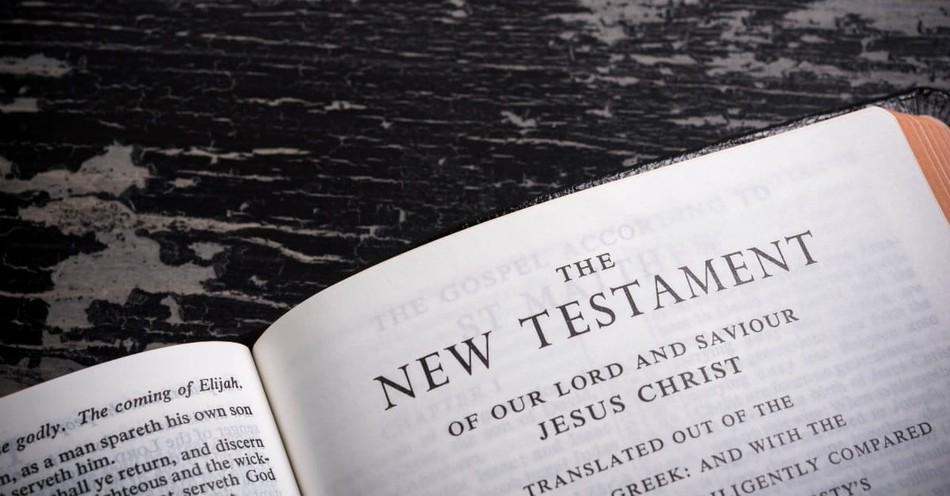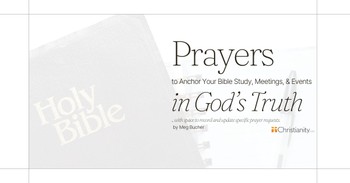The New Testament’s books may be shorter than most Old Testament books, but it can be hard to dive right into them. Fortunately, you don’t have to jump in without knowing what the books are about.
How Many Books Are in the New Testament?
In total, the Bible contains 66 books. Twenty-seven of those books are in the New Testament:
- The Four Gospels tell the story of Jesus’ conception, birth, life, death, and resurrection. They are attributed to Matthew, Mark, Luke, and John.
- The Book of Acts is written by Luke and functions as a sequel to his Gospel.
- The Epistles of Paul are 13 letters written by the apostle Paul to various parties.
- The General Epistles are written by four individuals (John, Peter, James, and Jude) to other Christians.
- The Book of Hebrews is written by an unlisted author, speaking to Jewish Christians to clear up misconceptions about Jesus.
- The Book of Revelation is attributed to John and consists of letters to seven churches and prophecies about coming events.
Why Are There Four Gospels?
The four Gospels are each attributed to a writer who was either one of Jesus’ 12 apostles or associated with them. Matthew is believed to be the tax collector who became one of Jesus’ twelve disciples. Mark is believed to be “my son Mark,” the student of Simon Peter mentioned in 1 Peter. Simon Peter was one of Jesus’ three closest disciples (along with John and James). Therefore, the Gospel of Mark is essentially Peter’s memories of Jesus, recorded by his student. Luke was not a member of the original disciples but traveled with the apostle Paul and interviewed witnesses for his account of Jesus’ life. These three Gospels (or the Synoptic Gospels) have many similarities, and the writers may have drawn on each other’s work as they composed their accounts.
John, like Simon Peter, was one of Jesus’ three closest disciples (possibly “the disciple that Jesus loved” mentioned several times in the Gospel of John). About 90 percent of John’s Gospel is different material from the Synoptic Gospels, including a long speech that Jesus gives during the Last Supper.
Many people have wondered why Christians include all four accounts of Jesus’ life in the Bible (why not just choose one?). There are at least three excellent reasons for keeping all four Gospels in the Bible:
Each Gospel has been respected throughout history. Churches have put all four books in the New Testament canon throughout Christian history. There have been minor debates here and there, but Christianity has pretty consistently agreed on what books are Scripture, especially compared to other religions.
Each Gospel gives different details. It can be confusing that the Gospels don’t always agree on when particular things happened (did Jesus clear the temple on Sunday or the next day?) or on specific details (how many angels were at Jesus’ tomb?). However, historians have pointed out that different eyewitness accounts of a historical event remember things slightly differently. In criminology, this helps identify whether eyewitnesses are lying (if they all give the same story, they’re giving a false story practiced earlier). Thus, the differences between the Gospels (and that they agree on the crucial things) suggest they’re all accurate.
Each Gospel provides a different focus. As Mark L. Strauss explains in Four Gospels, One Jesus, all four Gospels agree on the core details while highlighting specific themes. Matthew emphasizes Jesus as the prophecied Messiah, Mark emphasizes him as a Suffering Servant, Luke emphasizes him as the Savior for Jews and Gentiles alike, and John emphasizes him as God the Son revealing God the Father’s designs.
What Happens in the Book of Acts?
The Book of Acts picks up right after Luke’s Gospel: the resurrected Jesus talking to his disciples. After teaching his disciples for 40 days, Jesus ascends to heaven. Following Jesus’ last instructions, his followers (the eleven disciples and others) wait in Jerusalem for the Holy Spirit to empower them. In a dramatic display at the Feast of Pentecost, the Holy Spirit descends on them, and they become confidant teachers and miracle workers.
Over the next few years, Jesus’ followers convert and baptize many new believers, which are eventually called “Christians.” A spiritual encounter leads to Peter preaching to Romans, showing the church that their message is not just for the children of Israel: even Gentiles are becoming Christians. Saul of Tarsus becomes a Christian after Jesus appears to him en route to Damascus, and later a trailblazing missionary to Gentiles. After returning to Jerusalem after several missionary journeys, Paul is arrested on false charges and uses his Roman citizenship to demand a trial before Caesar. The Book of Acts ends with Paul living in Rome, awaiting trial and teaching anyone who visits him. Some scholars believe Luke planned to write a sequel covering Paul’s ministry in Rome (he spent several years in house arrest awaiting trial). Paul spent his time awaiting trial teaching to anyone who visited him. Apparently, Paul’s trial ended with his acquittal, although Emperor Nero later martyred him for his “subversive teachings” about a god superior to the divine Roman Emperor.
Who Did Paul Write His Letters To?
The Pauline Epistles are directed to several parties. Nine of Paul’s letters are directed to churches in cities or regions:
- Romans to the church in Rome
- 1 and 2 Corinthians to the church in Corinth
- 1 and 2 Thessalonians to the church in Thessalonica
- Colossians to the church in Colossae
- Galatians to the church in Galatia
- Ephesians to the church in Ephesus
- Philippians to the church in Philippi
Since Christianity wasn’t a recognized religion distinct from Judaism in the first century, Christians didn’t have unique places of worship built explicitly for that purpose. They met in people’s houses, sometimes described as individual churches (Colossians 4:15 greets “Nympha and the church in her house”). Herman Hendrickx and other scholars have suggested that Paul sometimes writes to the whole collection of house churches within a city, calling it “the church of” this or that city. Paul’s letters provide religious instruction, and some deal with specific crises occurring in those churches.
Other Pauline Epistles are written to individuals that Paul knew. He wrote to his students Titus and Timothy, advising them about how to administrate churches. His letter to Philemon is addressed to a man living in Colossae, letting him know that Paul had met a runaway slave that Philemon owned. John Byron suggests this letter was read in public to the church in Colossae, not just given to Philemon, because it touches on a question affecting the entire church: should Roman Christians purchase or keep slaves?
Who Did Peter Write His Letters To?
The two epistles of Peter are also called the Petrine Epistles, and are traditionally believed to be written by the same Peter who was Jesus’ disciple, denied him three times, and later founded the church in Rome.
The first letter is addressed “to God’s elect, exiles scattered throughout the provinces of Pontus, Galatia, Cappadocia, Asia and Bithynia” (1 Peter 1:2). The second letter is addressed “to those who through the righteousness of our God and Savior Jesus Christ have received a faith as precious as ours,” possibly the same recipients. So, it appears that, like Paul, Peter is written to various house churches—although within a larger region, not just a city. 1 Peter includes “she who is in Babylon, chosen together with you, sends you her greetings, and so does my son Mark” (1 Peter 5:13). Scholars have guessed that Peter was living in “Babylon” (i.e., Rome) when he wrote the letter.
Since Peter writes to large areas, he doesn’t address particular scandals or problems with specific churches. Instead, he gives general religious advice on living holy lives, handling common problems (persecution, how church elders should live, etc.).
Who Did John Write His Letters To?
The Epistles of John are three letters attributed to the apostle John. John’s first epistle addresses “my dear children” (1 John 2:1), Christians he knew from prior ministry experience. He addresses various false teachings associated with Gnosticism, clarifying the Incarnation and the good Christian life. John’s second epistle is “to the lady chosen by God and to her children” (2 John 1:1), complimenting her religious devotion and warning her to avoid false teachers. John’s third epistle is to “my dear friend Gaius” (3 John 1:1), warning him about a slanderer named Diotrephes, commending a Christian named Demetrius, and mentioning John will visit Gaius soon.
Who Were James and Jude?
“James, a servant of God and of the Lord Jesus Christ” (James 1:1), is believed to have an unusual position: he was one of Jesus’ four younger brothers (Matthew 13:55). He apparently didn’t believe in Jesus’ Messiah status until after Jesus was resurrected (1 Corinthians 15:7), then became an essential member of the early church in Jerusalem. His epistle, written to Jewish Christians, complements Paul’s epistles, talking about being saved by grace. James affirms the value of faith and grace, but “faith by itself, if not accompanied by action, is dead” (James 2:17). We are saved by faith, but our good works show our faith.
Jude’s epistle is written by “Jude, a servant of Jesus Christ and a brother of James,” most likely another one of Jesus’ brothers. Jude writes to an unspecified audience, and “although I was very eager to write to you about the salvation we share” (Jude 1:3), he must address a pressing issue instead: false teachers. Jude condemns these believers who have committed apostasy and encourages Christians to persevere in the truth.
Who Wrote the Book of Hebrews?
Traditionally, The Book of Hebrews has been attributed to Paul, although it doesn’t list its author. The author’s identity may be unknown, but he has a strong understanding of Judaism. He refers to angels, Moses and other prophets, and “the order of Melchizedek” (Hebrews 7:17), all important figures in the Old Testament. He builds a case that Jesus is a priest in Melchizedek’s order, superior to angels and important Old Testament figures, which clarifies Jesus’ position. As the Messiah and priest in the order of Melchizedek, Jesus surpasses Old Testament covenants and sets up a new covenant of grace. Thus, Jewish Christians can be secure that they are not betraying God by accepting Jesus as their savior. Rather, they are accepting the Old Testament’s culmination.
Who Wrote the Book of Revelation?
The Book of Revelation is written by John, probably the apostle John who wrote the fourth Gospel and the three epistles.
John describes God-given messages to seven churches in various conditions (some persevering against persecution, some gone lukewarm) and a series of apocalyptic visions. Like the apocalyptic visions in the Book of Daniel, these visions are highly visual and describe strange beasts, supernatural beings fighting each other, and cryptic numbers. Christians throughout history have debated whether these prophecies are coded descriptions of persecution Christians were experiencing at the time, descriptions of the world’s end, or a mix of both.
Photo Credit: ©GettyImages/jaflippo

This article is part of our Bible resource for understanding the significance and meaning of biblical phrases and ideas. Here are our most popular Bible articles to grow in your knowledge of God's Word:
Promises of God in the Bible
Is "This Too Shall Pass" in the Bible?
What Was the Ark of the Covenant?
Top 10 Bible Stories for Kids
“Iron Sharpens Iron” in Proverbs 27:17
"Fearfully and Wonderfully Made" in Psalm 139
“Be Still and Know That I am God” in Psalm 46:10
"No Weapon Formed Against Me Shall Prosper" - Isaiah 54:17

.jpg)


.jpg)